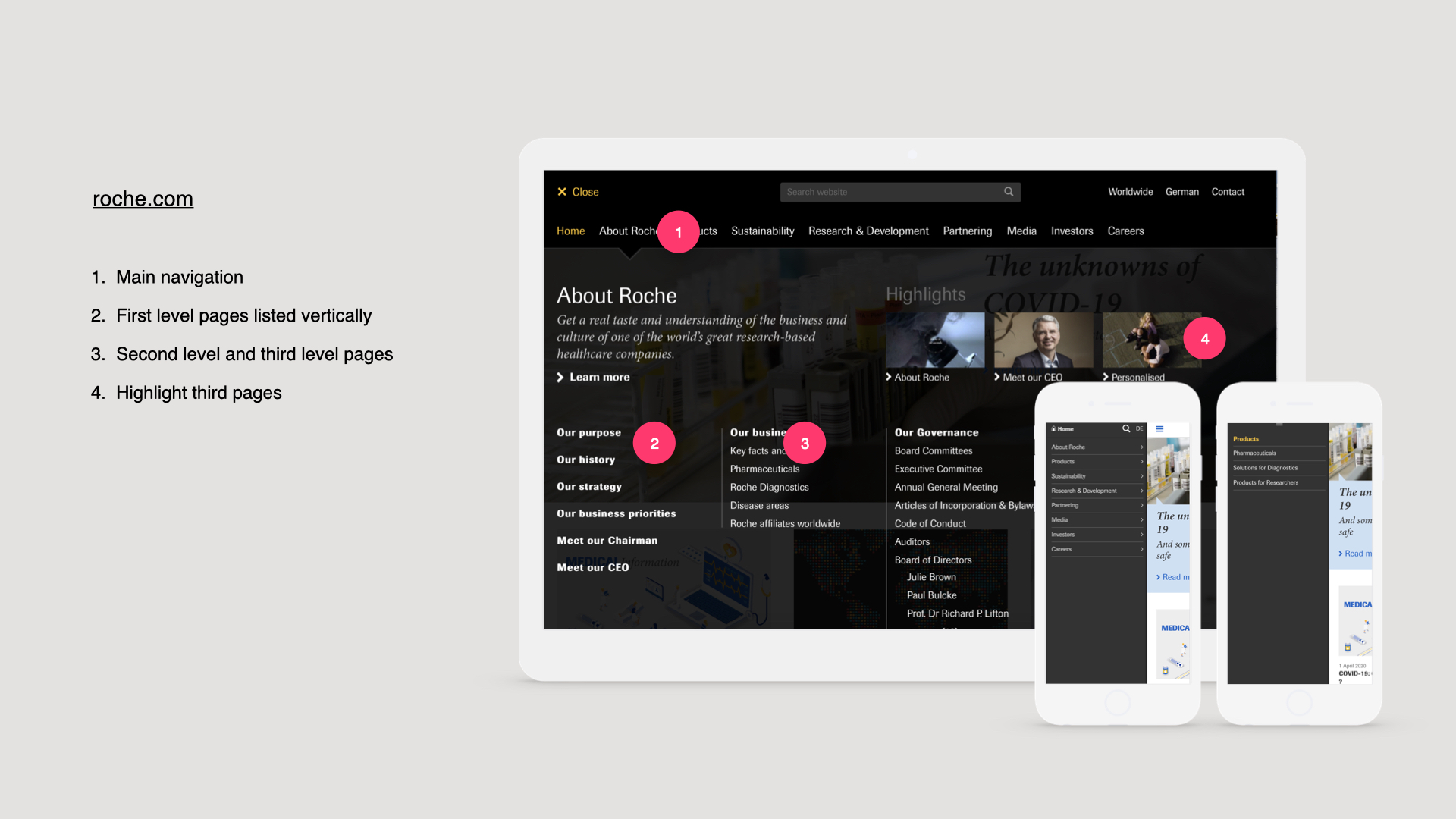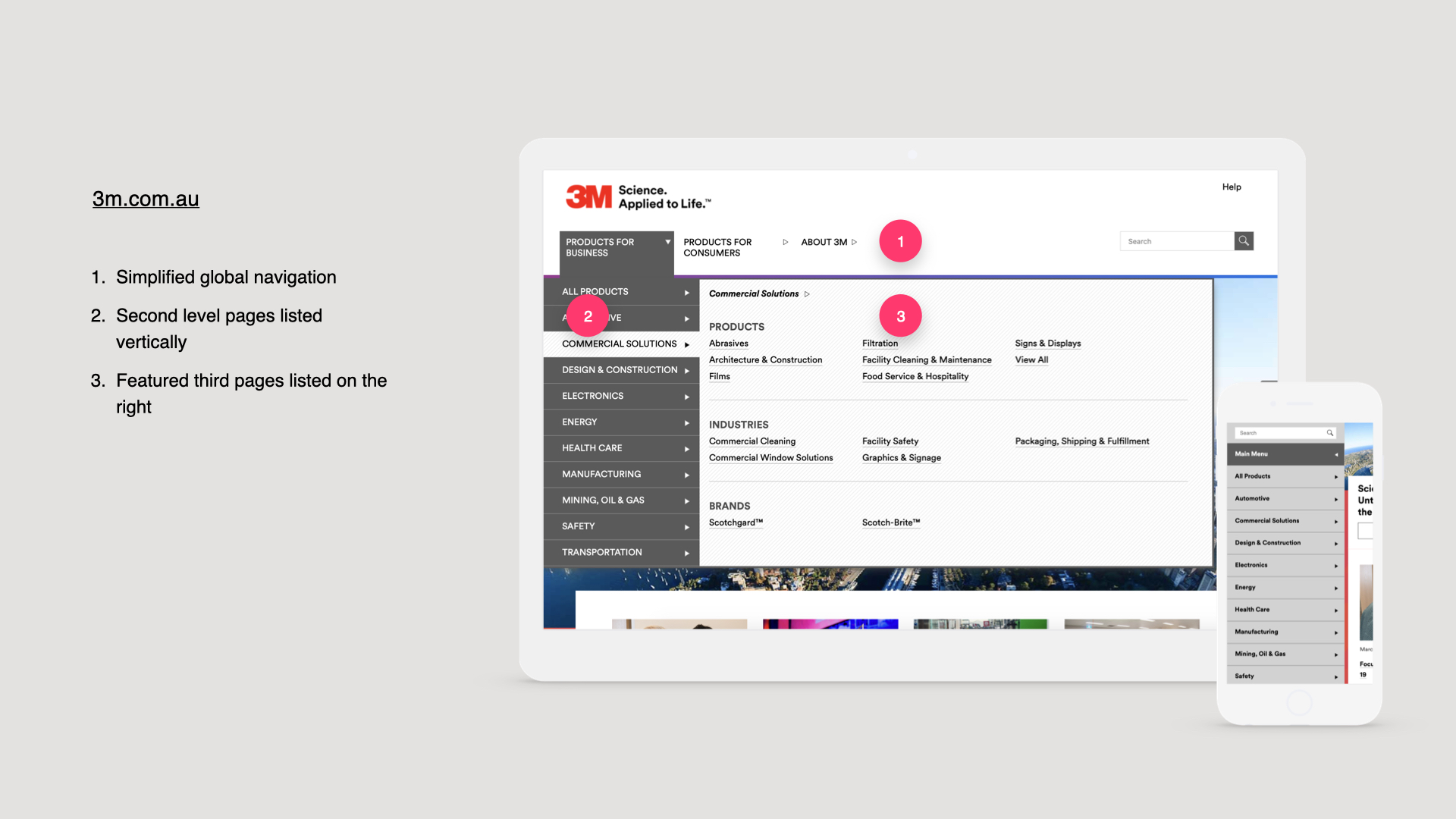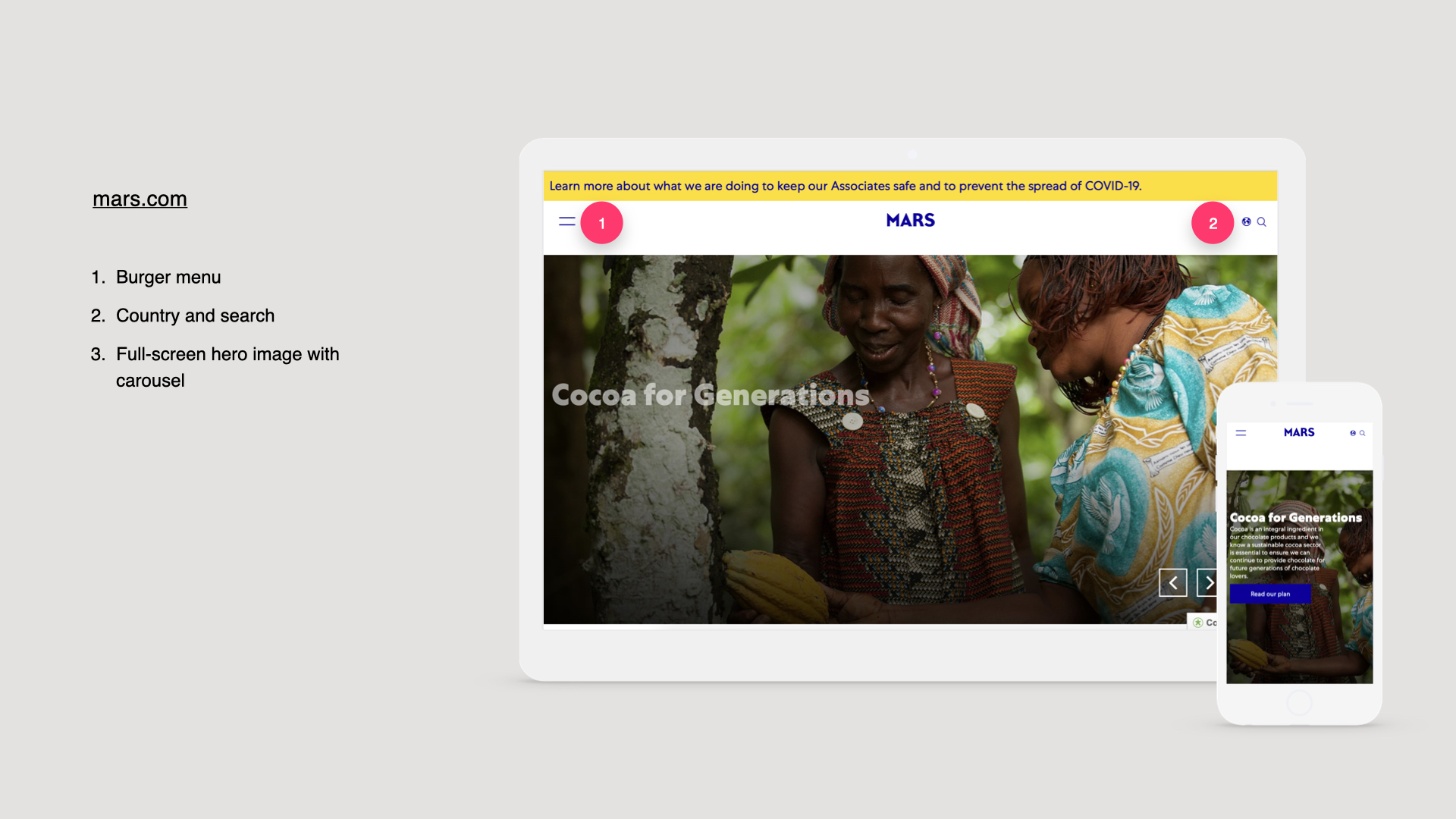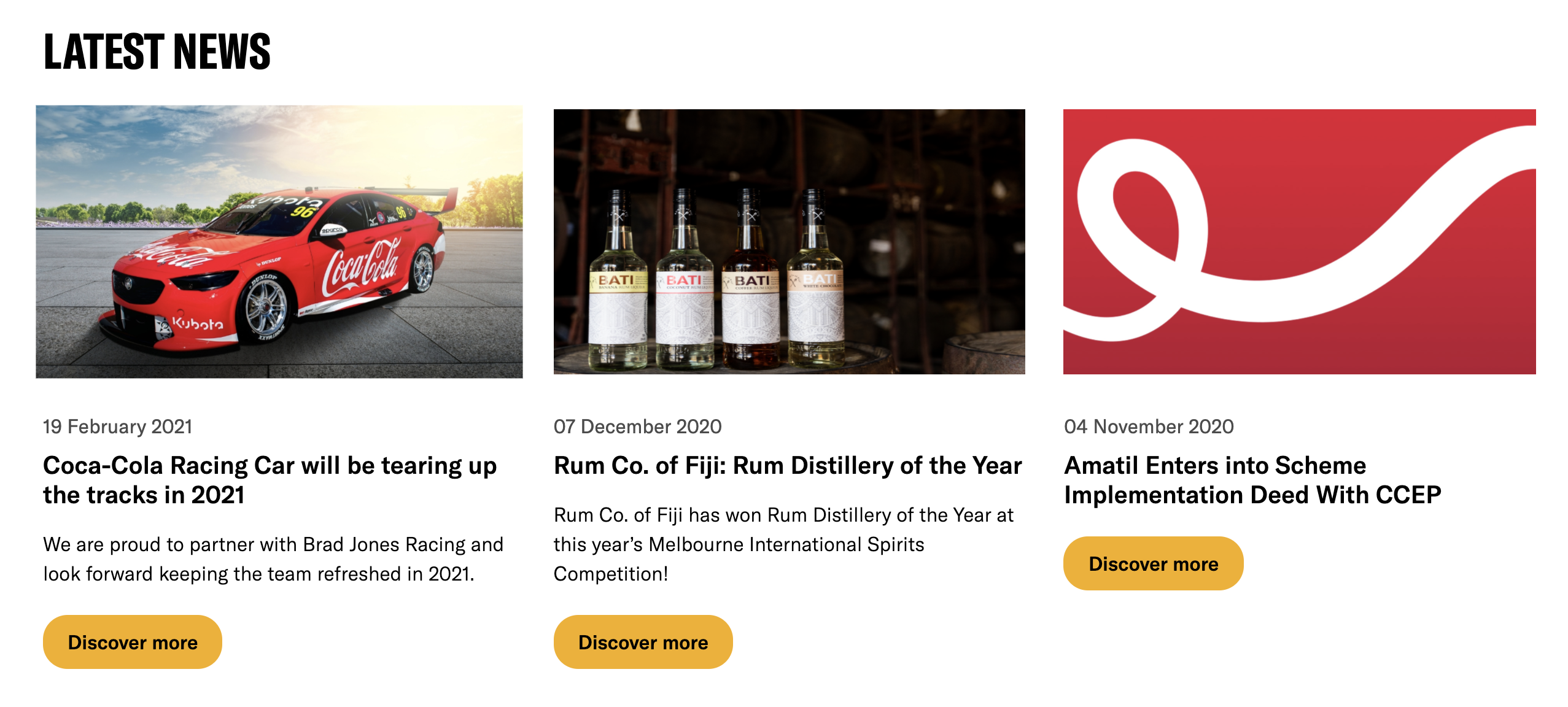Coca-Cola
Amatil
UX research, Information architecture
2020
The research and user testing developed a comprehensive and optimal information
architecture for the new Coca-Cola Amatil website.
At the time the IA was redesigned, the Coca-Cola Amatil stakeholders were focused on repositioning the brand toward sustainability and work equality.
It has been required that users from different regions be able to find static and dynamic content pages related to the positive impact of Coca-Cola Amatil in regards to the environment, support to the local community and their global workforce.
The portal is also an important hub for existing and new investors, commercial partners and suppliers.
It has been required that users from different regions be able to find static and dynamic content pages related to the positive impact of Coca-Cola Amatil in regards to the environment, support to the local community and their global workforce.
The portal is also an important hub for existing and new investors, commercial partners and suppliers.
Discovery workshop
A workshop session with Coca-Cola Amatil stakeholders has been conducted in order to understand who the users are, and will be for the new Coca-Cola Amatil website, and gather content and feature requirements in order to successfully meet their needs.
In the workshop eight proto-personas and their goals have been identified:
- Motivated professionals: media, shareholders,
gov & regulators
- Interested public: consumer, job seekers
- Vested cohort: employees, customers, brand partners

Preliminary analysis
The web traffic data of the existing website have been analysed and it has been possible to identify that most of the traffic comes organic search in Google, uncover potential areas of improvement and paint points.
The most searched keywords are around specific products and the company leadership effort around sustainability.
Consumer’s brand percention
A data from a brand reputation survey has been compared agaist user's behaviours collected from the existing website.
Consumers visit the website for two main reasons:
- Environment and health. Costumers have heard or read about environmental or health-related issues associated with larger companies and search on Google for more information around the topic.
- Product knowledge and discovery. Costumers highly engaged about a specific product are not aware that the product is Coca-Cola Amatil and they conduct online research around the product.
Investors and suppliers
The web traffic to the section of the website dedicated to investors and suppliers is primarily returning users.
This type of users access directly to the website looking for information related to their specific relationship with the company.
However, in the existing website, the “Investors and media’ are the least engaging pages, with bounce rates reaching 50%.
Page performance
High bounce rate has been recorded from many landing pages due to the lack of contents in the page.
Most pages have a bounce rate of over 50%, indicating more than half of all website visitors are underwhelmed at first glance.

However, some specific pages have bounce rates lower than 40%. This page not only drove traffic but was also highly engaging.
The structure of these pages has been analysed and used to build other future page builds.
Test sampling
A panel of select participants has been created to ensure the validity of the tests and allow an effective and agile workflow.
A screening questionnaire has been designed to profile the potential candidates:
- Brand familiarity
- Health and food & beverage habits
- Attitude toward environmental issues
- Shopping behaviours and channels
- Demographics such as location, age, language, personal aspirations, education and employment, household income and structure.
Participants were recruited from an online panel from a mix of demographics and select professions based on the persona profiles.
It has also been ensured the participants were not non-rejectors of Coca-cola products and brands.
Card sorting
The hybrid card sorting test have been conducted with 200 participants for each round from Australia New Zealand and from Indonesia.
Participants were presented with premade groups but also invited to create new ones and name them.
This first test aimed to uncover any difference in the participants' mental models from different regions and segments.
Terms related to company values and history company, products, carriers and investment were grouped consistently by over 80% of the participants.
Topics such as “diversity & inclusion” and “responsible sourcing” has been affiliated with different groups.
It has been observed that some participants connect these topics with “sustainability” while others place them in mixed groups.
This test intended to establish how many participants placed some of the transversal topics in the premade categories.
A post-test questionnaire asked the participants to express their level of confidence in their choice and add any additional comments.

Landscape review
A landscape review has been run to explore and gain insights to the IA via parallel industries, navigation paradigms and web concepts with a strong focus on acquisition and conversion.
The area of investigation has been around websites in the fast-moving consumer goods category and the navigation paradigms in website with large navigation trees.
The review captured some common and recurrent practices worthwhile to consider:
- Use of mega-menu
- Predominance of topic based navigation
- Audience base navigation, when present, is featured in a global nav bar (secondary/tertiary visual hierarchy).
- Language/country selector always present and featured either in the header or in a prominent position.
- Search tool always present and featured either in the header or in-page with a prominent size.






Information architecture
User goals has been matched with specific navigation streams in the new information architecture.
Due to the complexity of the information architecture, the navigation has been divided into three groups:
- Primary (customers)
-
Secondary (investors, suppliers and jobseekrs)
- Thirdary (governament agencies and NGOs)

Testing
Treejack testing has been used to validate the information architecture but also to revealed unexpected interaction patterns.
Information have more than a correct placement. Testing and competitor analysis revealed that users with different mental models.
![]()
Internal links and related contents have been added to the relevant pages to ensure the users can find the information required even in the other branches of the navigation.
Treejack testing has been used to validate the information architecture but also to revealed unexpected interaction patterns.
Information have more than a correct placement. Testing and competitor analysis revealed that users with different mental models.

Internal links and related contents have been added to the relevant pages to ensure the users can find the information required even in the other branches of the navigation.


214%
Increase of time on-page indicates users find the information desired62%
Increase in returning traffic to Sustanibiliy pagesResults
The navigation is based on a dropdown menu that allows the user to explore the second level pages under each of the seven first level pages.
This model is particularly beneficial for users on mobile devices allowing them to reach the desired page without passing through intermediate pages.

Page structure
The new page structure promotes contents from the deeper levels to first and second levels to decrease the drop rate.
Several pages have also been merged to reduce the need to load another page to navigate the contents.
Related content and stories are teased and linked throughout the website.
The new page structure promotes contents from the deeper levels to first and second levels to decrease the drop rate.
Several pages have also been merged to reduce the need to load another page to navigate the contents.
Related content and stories are teased and linked throughout the website.



Infographics synthesise complex data in a visually engaging way and provide transparency.


News and dynamic contents
News has considered taxonomy/categories that can be shared in the context of particular sections.
